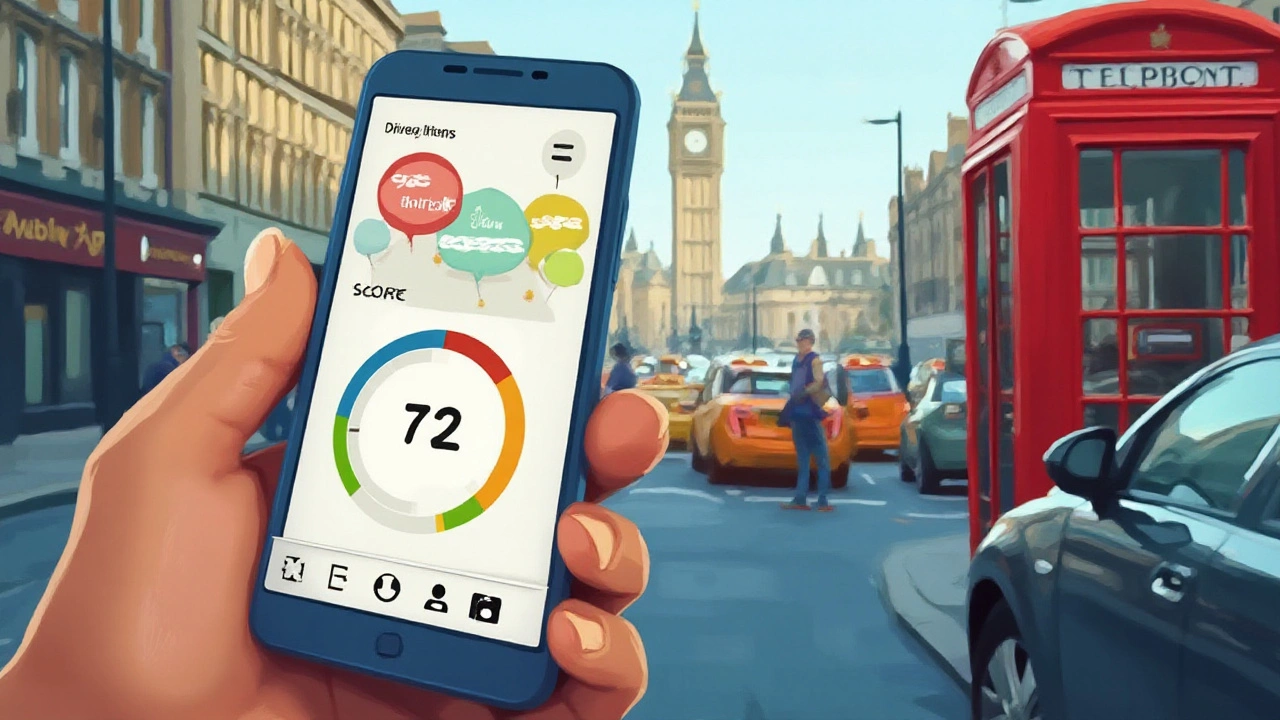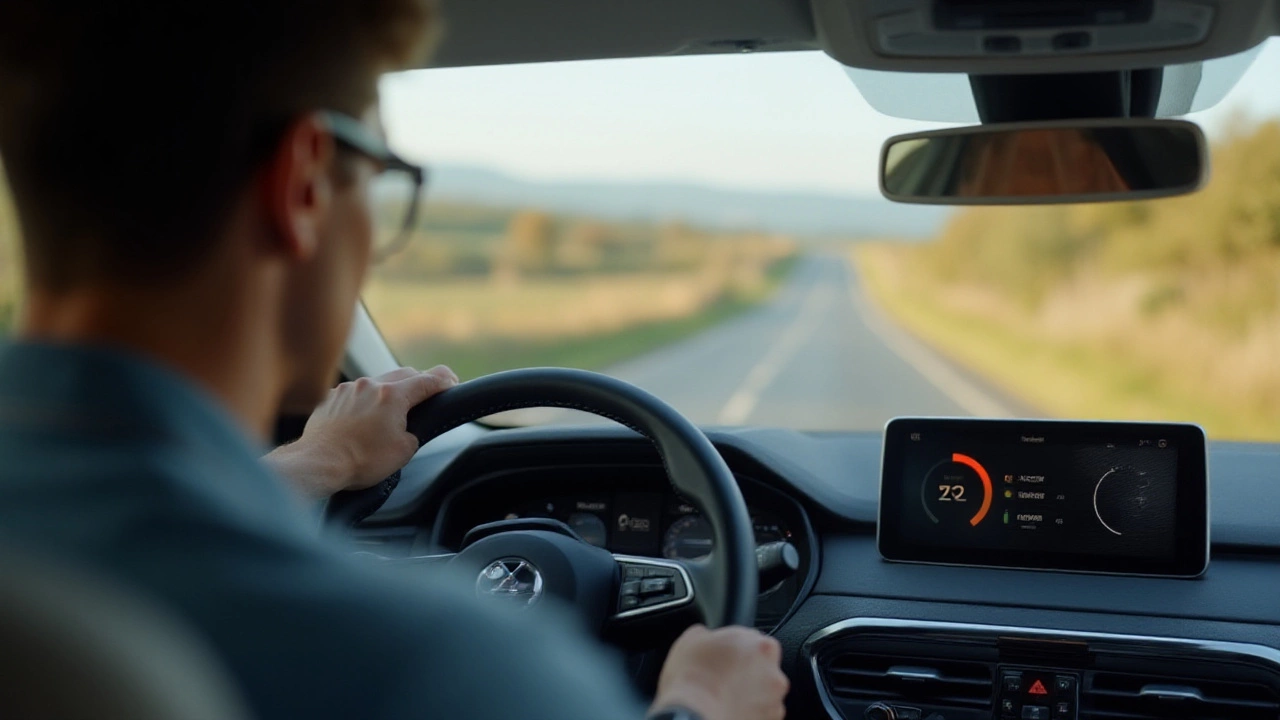Imagine grabbing your phone, opening your insurance app or vehicle companion dashboard, and spotting a big number: 72. That's your driving score. But what does that actually mean? You want to know if you should celebrate or worry. And honestly, the whole concept of a driving score feels like yet another mystery handed to us by the tech overlords. The truth is, these numbers matter. They decide your insurance rates, may impact your access to certain driving programs, and, increasingly, are shaping how you think about your own driving. So, is a driving score of 72 good? Let’s bust open the black box and get some clarity.
Understanding Driving Scores and What 72 Means
First, where does this score come from? Car insurers and telematics companies use a mix of tech – your smartphone's sensors, black box devices, or in-car systems – to track how, when, and where you drive. They crunch the data using fancy algorithms and spit out a score between 0 and 100. Usually, higher means safer. These scores try to reflect real-world driving safety, not just whether you passed the test years ago. A driving score of 72 generally lands you high enough to be considered a low risk but low enough that you’re not among the top-tier, squeaky-clean drivers.
Most common schemes break the numbers out like this:
- 80-100: Excellent. You’re that mythical creature who rarely speeds, drives smoothly, never slams the brakes, and is everyone's favorite backseat driver.
- 60-79: Good. You’re sensible, but there’s some room to tighten things up. Maybe an occasional speedy merge, or one or two sharp corners.
- 40-59: Moderate. You’re probably safe enough, but things like hard brakes, nighttime drives, or using your phone hurt you here.
- Below 40: At risk. There’s a noticeable pattern of risky driving, frequent distractions, or maybe a wild commute that sets off alarm bells.
So with a score of 72, you’re doing better than most. A recent 2024 industry report from the British Insurance Brokers’ Association says the average UK telematics driver has a score around 68 to 71—so 72 puts you slightly above average.
But don’t take this at face value. For some providers, 72 might fall into ‘standard’ territory, for others it might be a step into ‘good’ or even ‘great’. Always check your specific provider’s guidelines, because with insurance, nothing is ever just one-size-fits-all.
It’s also worth noting that just getting a single snapshot score won’t always tell the whole story. Most systems factor in your last 30 days, sometimes even the last 90. So if you had a single bad week, your score could be temporarily lower. Some apps also let you drill into day-by-day performance, showing which trips or types of journeys dented your score.
This is more than just numbers, though. Many drivers see their scores impact real costs. High-scoring drivers (think over 80) often get the juiciest discounts—sometimes 10% to 30% lower premiums. Meanwhile, if you drop into the 60s or lower, you might see fewer perks, higher renewal quotes, or even warnings from your app to shape up. Some companies will even reward sustained improvements with cashbacks or gift cards, especially for new drivers under 25.
| Score Range | Risk Category | Estimated Premium Impact (%) |
|---|---|---|
| 80-100 | Excellent | -10 to -30% |
| 60-79 | Good | 0 to -10% |
| 40-59 | Moderate | +5 to +20% |
| 0-39 | High Risk | +20% or more |
So a driving score of 72 is nothing to scoff at. It’s an above-average mark that shows you’re mostly playing by the rules, but you do have space to snag that ‘excellent’ discount. And compared to the folks lurking around 40, you’re already winning.

What Impacts Your Driving Score and How to Improve It
But how does that number creep up or down? The main ingredients usually include:
- Speed: Do you follow limits? Going just a little over won’t tank you, but consistent heavy speeding will.
- Acceleration/Braking: Hard starts or emergency stops flag you as risky.
- Cornering: Do you swing around bends like a rally driver? Sharp turns drop your score.
- Phone Use: Some apps detect mobile use while driving, and this is a huge negative. Even music changes can hurt you if you don’t use voice controls.
- Night Driving: Late-night journeys, especially between midnight and 5am, risk more accidents, so frequent overnight runs pull scores down.
- Trip Regularity: Odd routes and unpredictable driving patterns look unusual and can be flagged for risk.
Want that sweet 80+ score for cheaper insurance? Here are some proven strategies:
- Leave early to avoid rushing. Most bad scores happen on hurried commutes.
- Use cruise control on motorways. It keeps your speed steady and reduces accidental speeding blips.
- Brake sooner and gentler. Give yourself more following distance—2 seconds minimum in dry, 4 seconds if it’s wet.
- Treat every journey like your driving examiner is riding shotgun. Imagine they’re clucking their tongue every time you jab the pedals.
- Invest in a proper phone cradle and stick to voice controls if you must interact. Some new cars now physically lock out entertainment controls at speed for this reason.
- If your job or life means a lot of night driving, try to batch your late journeys. Apps usually care more about frequency than the odd late trip.
- Ask for breakdowns from your insurer. Many telematics providers show you specific tips or trip heatmaps highlighting problem areas.
There’s another trick: most apps reset your average every policy renewal—often every 12 months. So even if you've had a rough month, improvements stack up over time. The biggest climbs tend to happen in the first 3 to 6 months as you get used to being watched and adapt accordingly. Some apps even gamify this, with trophies, badges, and monthly leaderboards. Nothing like friendly competition to trigger those safe-driving instincts, right?
If you’re curious where people drop points most: phone usage is now the number one killer. A 2023 RAC report revealed that 43% of under-25s admitted to handling a phone for music or directions while moving—hurting their score and risking high premiums. Hard braking comes in second, often caused by tailgating or getting caught out in traffic. Those gentle, defensive moves you make really do add up.
For some, it’s not all in their control. Think parents running late-night lifts, healthcare workers on unpredictable shifts, or delivery drivers zigzagging all day. If that’s you, flag it with your insurer. Some will overlook certain patterns if you give them a heads-up, or at least explain why you’re not a standard 9-to-5 commuter.

The Real Power of Telematics and Why Scores Matter
Is having a driving score even fair? For ages, insurance rates were built on postcode, age, and historical claims—things you can’t change. Telematics and driver scoring are shaking that up. The aim: reward better drivers with real money, lower-risk policies, and sometimes even early access to premium features. But these systems aren’t just tools for insurers. They can help you reveal hidden habits (like that habit of dashing to beat yellow lights) and track real improvement over time.
Data suggests it works. Since the wide adoption of telematics among younger drivers in the UK, road accidents in the 17-25 group dropped by around 35% in the past decade. That is solid evidence these scores push people to drive safer. Plus, more than half of drivers see their first policy renewal come with a notable discount if they keep their average north of 70.
But you should be wary of treating it like an all-seeing judge. Not all data is created equal. Scores can sometimes dip for reasons outside your control—say, if someone else borrows your car, or if GPS glitches record phantom speeding. If your app lets you flag or dispute odd trips, use it. A surprising chunk of points can be recovered simply by clarifying that it wasn’t even your journey.
As cars get smarter, these systems are only going to grow. 2025 signals a world where telematics factors into everything from car finance rates to which share-ride services you can sign up for as a driver. The UK government is even considering making minimum driving scores a part of some public sector contract work for drivers. So it’s not just about keeping your insurer happy—it’s about staying ahead of a changing motoring world.
The golden rule: use these systems as your own personal driving gym. Your score isn’t just a test; it’s your chance to spot weaknesses before they cost you real cash or, worse, someone’s safety. Even if you’re sitting at 72, congratulate yourself. You’re driving better than most Brits, but you’ve got a real shot at bumping that up to 80 and beyond.
And who knows? Maybe one day your friends will be calling you up, asking “Hey, what’s your secret to acing this driving score thing?” It’s all about small, steady tweaks. Keep your phone in your pocket, go easy on the pedals, and treat every trip like your drive is being graded—because, well, it is!

